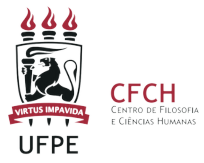Geography and social and environmental education: practices and experiences with primary school students in Catalão (GO)
DOI:
https://doi.org/10.51359/2594-9616.2021.250154Keywords:
Geography Teaching, Agroecology, Social and Environmental EducationAbstract
The article describes interventions and a didactic sequence of socio-environmental education with a special focus on agroecological principles. The article aims to demonstrate initiatives for Socio-Environmental and Agroecological Education interventions and highlight their relevance for the training of Basic Education students - Elementary School Stage. In the teaching methodology of the classes, playful perspectives were used, based on games, waste segregation practices and, in a gamified environment, an Agroecological Quiz; finally, a survey was carried out with the students, inducing reflection on the quality of life of people, as well as the internalized knowledge on such themes. Theteaching situations were developed at the State School of Education Matilde Margon Vaz in the city of Catalão (GO), in partnership with the Center for Studies, Research and Extension in Agroecology (NEPEA); integrating the discipline of Supervised Internship in Geography II. The results show a deepening of learning and the internalization of the concepts discussed in the didactic units. It is concluded that didactic experience with alternatives and teaching techniques focused on the student and his / her learning, lead to the increase of conceptual repertoire on themes of Geography of Nature, such as, for example, Socioenvironmental and Agroecological Education.
References
ALMEIDA, P.N. Educação lúdica: técnicas e jogos pedagógicos. São Paulo, SP: Loyla, 1995.
BERTAZZO, C. J. Agroecologizando no cerrado. 1. ed. CATALAO: NEPEA/Retratando o Cerrado, 2016.
BRASIL. Lei Federal nº 7.802 de 11/07/1989. Dispõe sobre os agrotóxicos. Disponível em: <http://www.planalto.gov.br/ccivil_03/LEIS/L7802.htm>. Acesso em: 23 de nov. 2018.
BRASIL. Base Nacional Comum Curricular – BNCC. Documento homologado pela Portaria n° 1.570, publicada no D.O.U. de 21/12/2017, Seção 1, Pág. 146, 2017.
BURIGO, André. Impacto dos Agrotóxicos na alimentação, saúde e meio ambiente. 2016. Disponível em:< http://www.mobilizadores.Fontebr/wp-content/uploads/2016/08/Cartilha-Agrotoxicos-final.pdf > Acesso em: 12 de nov.2018.
CARNEIRO, F. F.; AUGUSTO, L. G. da S.; RIGOTTO, R. M.; FRIEDRICH, K.; BÚRIGO, A. C. (Fonte). Dossiê ABRASCO: um alerta sobre os impactos dos agrotóxicos na saúde. Rio de Janeiro: Escola Politécnica de Saúde João Venâncio: São Paulo: Expressão Popular, 2015.
COELHO, M. C. R. S. Glifosato, Saúde e Ambiente - uma revisão. 2017. Dissertação de Mestrado- Instituto de Ciências Biomédicas Abel Salazar – Universidade do Porto, 2017. Disponível em:< http://hdl.handle.net/10216/110203> . Acesso em 19 jan. 2020.
CASTROGIOVANNI, A. C. et al. Geografia em sala de aula: práticas e reflexões. 2. ed. Porto Alegre: UFRGS/AGB, 1999.
CAVALCANTI, L.S. de. A geografia escolar e a cidade: ensaios sobre o ensino de geografia para a vida urbana cotidiana. Campinas: Papirus, 2008.
FERREIRA, R. A. S.; SILVA, F. W. O. da. Aplicação da maiêutica em atividades formativas de introdução à engenharia. Educação & Tecnologia. Belo Horizonte, v. 9, n. 1, p. 35 – 41, fev. 2004.
FONSECA, V. M. da. A educação ambiental na escola pública: entrelaçando saberes, unificando conteúdos. 1ª ed. São Paulo: Biblioteca 24horas, 2009.
IEA - INSTITUTO DE ECONOMIA AGRÍCOLA - IEA. Defensivos Agrícolas: comercialização recorde em 2011 e expectativas de acréscimo nas vendas em 2012. São Paulo: IEA, 2012.
INCA. INSTITUTO NACIONAL DE CÂNCER JOSÉ ALENCAR GOMES DA SILVA. Posicionamento do Instituto Nacional de Câncer José Alencar Gomes da Silva Acerca dos Agrotóxicos. 2015. Disponível em: <http://www1.inca.gov.br/inca/Arquivos/comunicacao/posicionamento_do_inca_sobre_os_agrotoxicos_06_abr_15.pdf>. Acesso em: 23 nov. 2018.
JIMENEZ, A.; GAITE, M. de J. Enseñar Geografia: de la teoria a la práctica. Colección Espacios y Sociedades. Madri: Editorial Síntesis, S.A., 1995.
MORAN, J. M. A educação que desejamos: Novos desafios e como chegar lá. 5ª ed. Campinas, SP: Papirus, 2012.
Número de agrotóxicos registrados em 2020 é o mais alto da série histórica; maioria é genérico, diz governo. O Globo. 14 de janeiro de 2021.Disponível: < https://g1.globo.com/economia/agronegocios/noticia/2021/01/14/numero-de-agrotoxicos-registrados-em-2020-e-o-mais-alto-da-serie-historica-maioria-e-produto-generico.ghtml> Acesso em 13 de maio de 2021.
Liberação é ‘serviço essencial’. Disponível em: <https://reporterbrasil.Fontebr/2020/05/96-agrotoxicos-sao-aprovados-durante-a-pandemia-liberacao-e-servico-essencial/ >. Acesso em: 04 jan. 2021.
PIGNATI, W. A. et al. Distribuição espacial do uso de agrotóxicos no Brasil: uma ferramenta para a Vigilância em Saúde. Ciência & Saúde Coletiva [online]. Rio de Janeiro, v. 22, n. 10, p. 3281-3293, out. 2017.
VYGOTSKY, L. S. A Formação Social da Mente. São Paulo: Martins Fontes, 1989.
Downloads
Published
How to Cite
Issue
Section
License
Copyright (c) 2021 Leonoura Katarina Santos, Robério Francisco de Macêdo, Cláudio José Bertazzo

This work is licensed under a Creative Commons Attribution 4.0 International License.
Authors who publish with this journal agree to the following terms:- Authors retain copyright and grant the REVISTA ENSINO DE GEOGRAFIA (RECIFE) right of first publication with the work simultaneously licensed under a Creative Commons Attribution NonCommercial International 4.0 (CC BY-NC) that allows others to share the work with an acknowledgement of the work's authorship and initial publication in this journal.
- Authors are able to enter into separate, additional contractual arrangements for the non-exclusive distribution of the journal's published version of the work (e.g., post it to an institutional repository or publish it in a book), with an acknowledgement of its initial publication in this journal.
- Authors are permitted and encouraged to post their work online (e.g., in institutional repositories or on their website) prior to and during the submission process, as it can lead to productive exchanges, as well as earlier and greater citation of published work.



